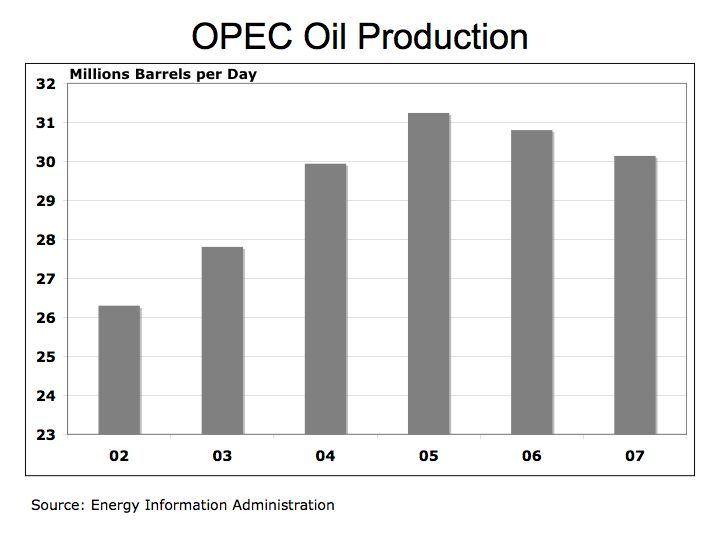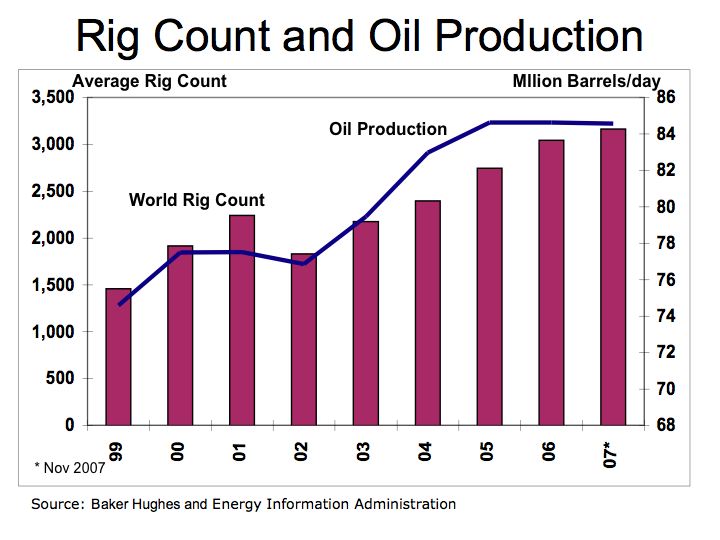Energy Shocks: Peak Oil Question
Peak oil has been a discussion for several decades after the theory developed by Dr. M. King Hubbert was put forth to alert the world of the impending decline in oil production. Recent data from the Energy Information Administration (EIA) oil production from the twelve members of OPEC has declined from its peak in 2005, despite increased global drilling activity.
Figure 1 OPEC Oil Production

Higher oil prices is driven demand for energy exploration and drilling is up significantly in the U.S. and the world according to Baker Hughes Worldwide Rig Count. Oil price continue to remain above $90/barrel and despite the increased oil drilling activity, oil production remains relatively flat.
Figure 1 demonstrates the tenuous nature of OPEC oil production with oil production declining almost 4% from the peak average production of 31.2 million barrels per day. One must remember that oil production is variable with up and down trends over time. However, with oil over $900 a barrel we are not seeing significant production increase despite the rise in oil drilling. Figure 2 illustrates world-drilling rigs in comparison to oil prices on a global basis. The U.S. accounts for over half the world oil drilling rigs yet our production is less than 10% of total global production.
Figure 2 Rig Count and Oil Production

What does all this mean? For one peak oil may be a reality or sooner then we like. Secondly, with concern over climate change and global warming, there is no real spending on alternative energy to help mitigate a potential shortage in oil. More spending on solar and hydrogen fuel cells is required to ameliorate the eminent disruption in oil flow. Without an orchestrated government mandate to develop alternative energies all nations face a national security issue that has the potential to cripple economic activity.
